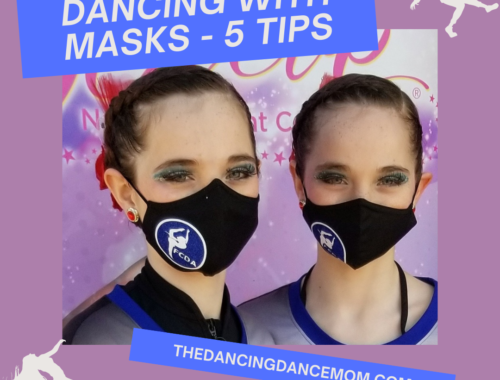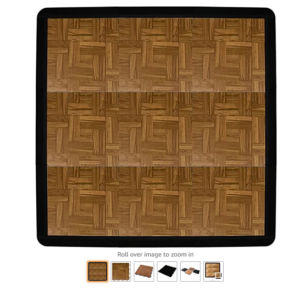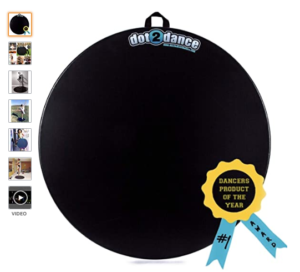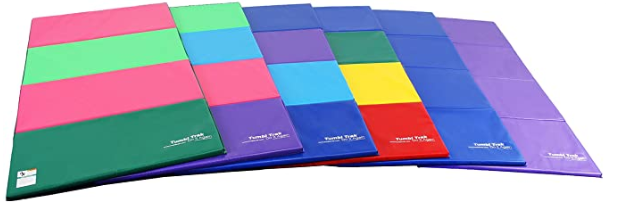
Setting Up a Dance Space at Home at Home – Part 2 – Flooring
This post contains affiliate links. We may earn compensation when you click on the links at no additional cost to you.
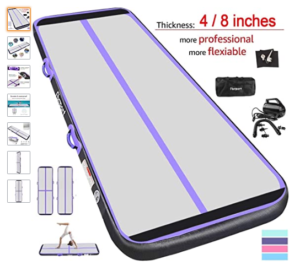
Ideally, any floor your dancer is working on should absorb some of the shock and impact from the movement; otherwise, there is a risk of straining the joints. Floors such as tile, for example, have the potential to do damage over time because of how hard and unyielding they are. Also, it’s important that all spaces be free of debris and any other obstructions. A gash on the floor can lead to a twisted ankle, so it makes sense to clear the way first (this is a fabulous opportunity to encourage them to clean up for their own benefit!). Also, your dancers should be wearing the correct footwear for the dance style when possible.
The Tap Trap
For most genres, a hardwood or laminate floor can work. Interlocking foam floors (used in many home gyms) will absorb impact, but your dancers may need to practice on them awhile before they can get used to the increased friction (they’re less “slidey,” as my girls have said). Carpet provides some cushioning – your dancer just needs to be mindful of avoiding rug burn while working on the floor. Tile is tricky to work with; the indentations from the grout lines, coupled with the hardness of the individual tiles, make a less than ideal dancing surface. But if that’s all you’ve got, you can mitigate some of the impact with shock-absorbent or compression socks (Apolla Performance Socks, for example).
Tap presents a different challenge (you probably don’t want your kids stomping on and scraping up your nice floor with their metal tap shoes). So it could be worthwhile to put something together yourself on the cheap. We bought a large piece of plywood and screwed a thin sheet of melamine on top of it; when my girls are done, we just stand it up against the wall and slide it behind the sideboard. That’s just one way to make a tap floor – you can find other methods online. Some teachers are allowing their students to wear sneakers during tap so as not to damage the floors they’re working with. Because of the increased impact placed on the ankles and feet during tap, going barefoot is not recommended.
Portable Dance Floors
If you have the funds, there are a number of portable dance floors you can buy online. One of the most popular brands is the Dot 2 Dance; they tend to be pricey, but reviewers absolutely love them. They’re lightweight, have gym mat backs and Marley tops, and feature tapered edges (so your dancer won’t trip). If you buy a small one, it can fit into your dancer’s bag (when he or she actually goes somewhere, whenever that will be). I’ve seen dancers whip them out backstage at competitions, including the World Dance Pageant a few years ago. These work for all genres of dance, including tap. There are other brands and styles available online as well, including kits that snap together (like this set that can be pieced together without tools).
Get Out of Here!

Weather permitting, dancing outside might be an option! Grass definitely has more “give” than indoor flooring, but be careful of small craters and uneven patches (do a careful sweep of the area first). A paved concrete driveway has some of the same issues as hard indoor flooring, but would be a viable solution for most hip-hop (just mark or modify the floorwork). The added bonus of having your dancers work outside is that they get some fresh air in the process (plus, it gives you a little more peace and quiet indoors!).
The Bottom Line
No matter what floor you use, your dancers should be encouraged to listen to their bodies and make adjustments accordingly. Wearing a thin sock or insert in their dance shoes, when feasible, could lessen the brunt that the legs and feet have to bear. Also, they should be stretching properly before and after their classes, and applying heat, ice, or massage as needed.
Whatever flooring you have, just keep in mind that you’re making the best of an incredibly tough situation. Even if it’s not today, your dancers will come to appreciate your efforts to help them continue their craft during this time of hardship.

Post a comment if you have any other tips on improving your at-home dance space!
Work hard, have fun! – Danielle
An at-home dance space is much better equipped with a ballet barre – click here for Meet Me at the Barre.
You May Also Like
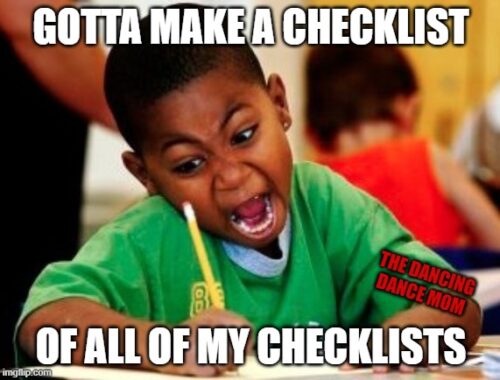
Definitely a Type A…
August 24, 2020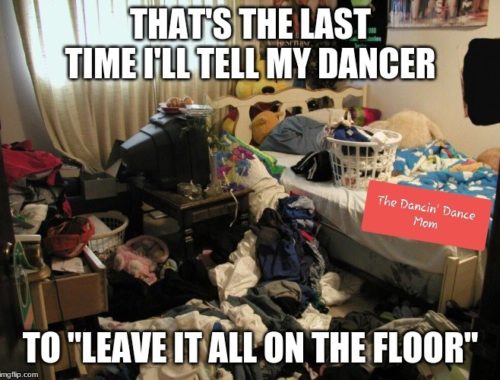
Yeah, that’s not what I meant…
June 25, 2020